What Happens if the Groom Sees the Bride Before the Wedding? Debunking Myths and Traditions
In the realm of weddings, many customs and beliefs influence the day’s proceedings, one of which pertains to whether the groom can glimpse the bride before the ceremony. This tradition is steeped in history, with roots in the time of arranged marriages where it was considered bad luck for the couple to meet before the wedding. The thought was that seeing each other could lead to second thoughts or bad omens for their future together.
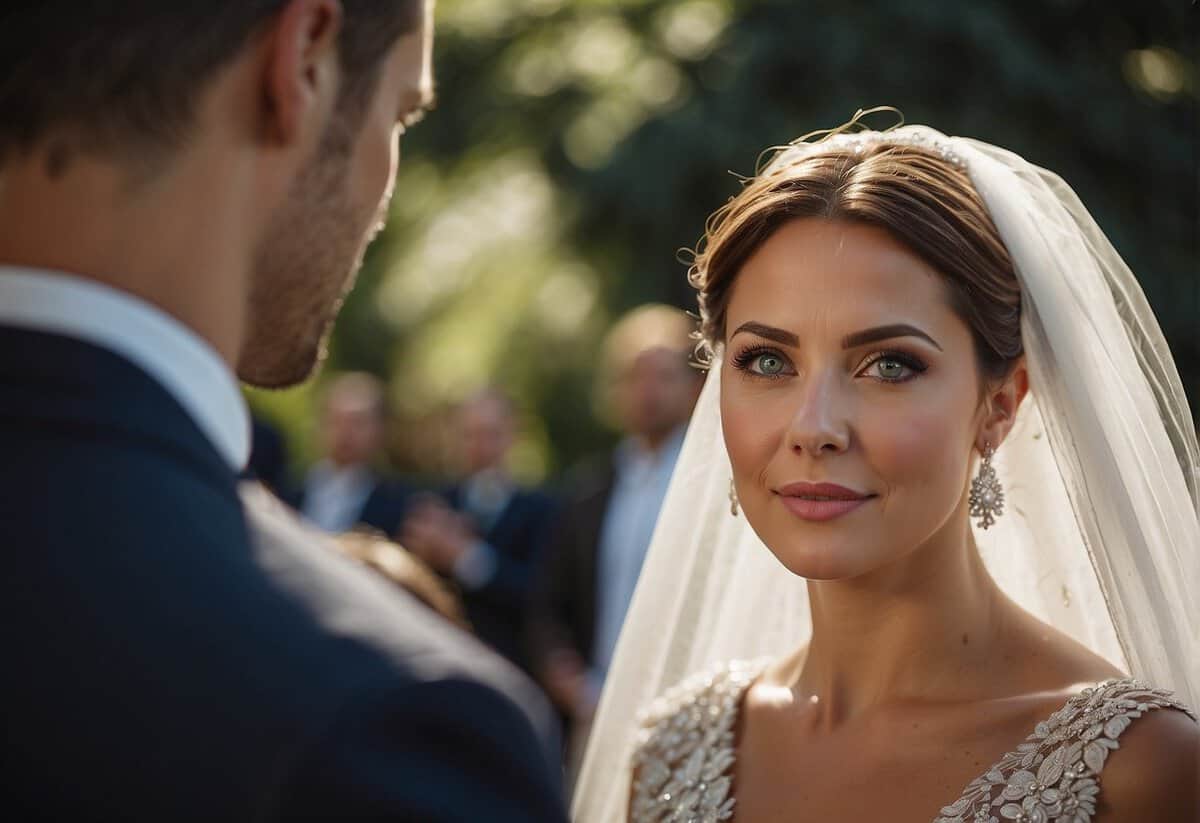
However, modern couples might consider breaking from this tradition for practical or personal reasons. Some feel that a “first look” moment allows for a meaningful exchange and helps to ease their nerves before walking down the aisle. Others believe that seeing each other beforehand does not impact the significance of the occasion, as the focus is on the commitment they are making.
Key Takeaways
- Traditional beliefs suggest it’s bad luck for a groom to see the bride before the wedding.
- Modern couples sometimes opt for a “first look” for more intimate moments.
- Seeing each other before the ceremony is a personal choice that doesn’t diminish the day’s meaning.
The Significance of Wedding Traditions
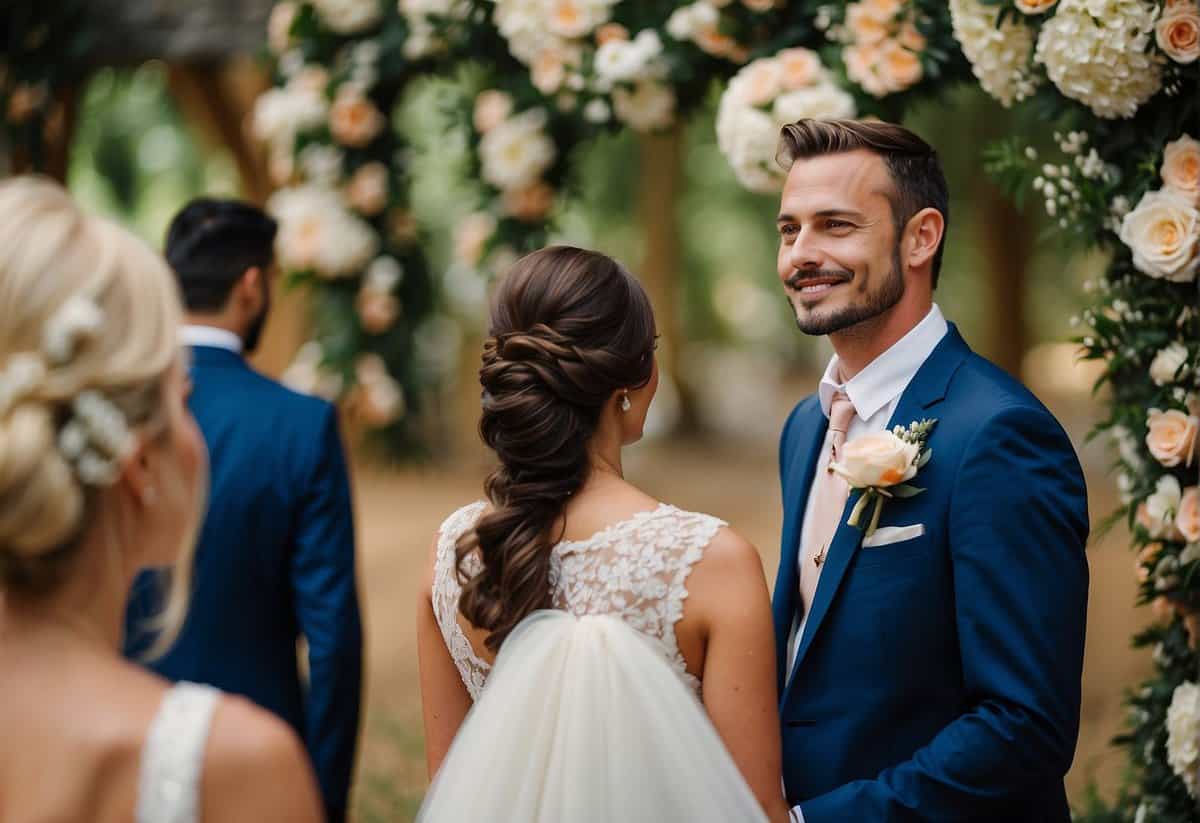
Wedding traditions have deep roots in history and often carry a wealth of symbolism that can add a layer of meaning to your special day. Here’s a look at two specific traditions that have stood the test of time.
The Origin of the ‘Not Seeing Each Other’ Custom
This custom dates back to a time when arranged marriages were commonplace. The belief was that if you and your partner were to see each other before the ceremony, it could bring bad luck. This tradition was also thought to prevent the groom from changing his mind if he hadn’t met the bride before and didn’t find her attractive upon meeting.
Symbolism Behind the Wedding Veil
The wedding veil carries its own history and symbolic meaning. Initially, veils were used to protect the bride from evil spirits or to symbolize modesty and purity. The lifting of the veil, which often happens during the ceremony, is a powerful gesture that signifies transparency and the revelation of the bride to her groom.
Cultural Perspectives and Variations
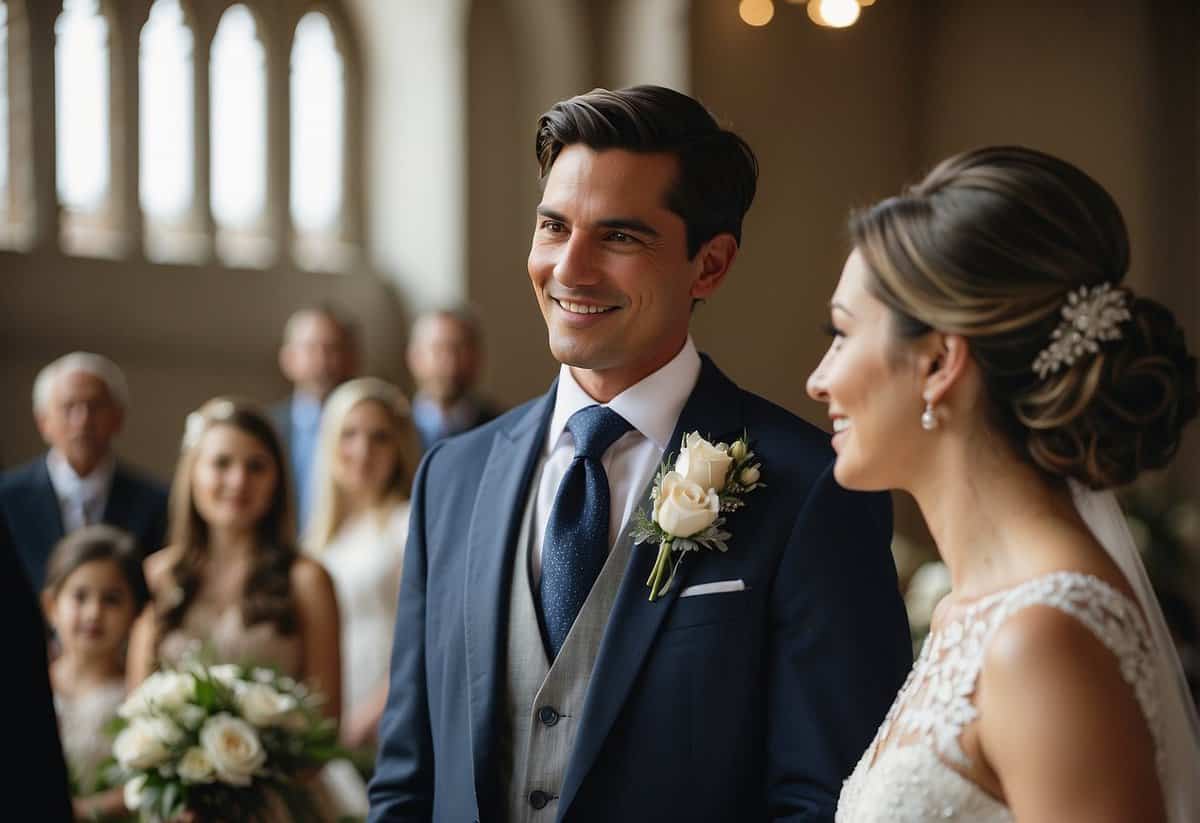
When it comes to the tradition of not seeing the bride before the wedding, cultures around the world hold various beliefs and customs. Whether it’s to avoid bad luck, uphold a sense of excitement, or to accommodate modern preferences, these practices reflect deep-rooted traditions and emotional significance.
Different Cultural Interpretations
In many cultures, the idea of the groom not seeing the bride before the ceremony is intertwined with superstitions and luck. For instance, it’s believed in some Western societies that it’s bad luck for the groom to see the bride in her wedding dress before the wedding. This custom could be rooted in the times of arranged marriages, preventing the groom from backing out upon seeing the bride, ensuring instead that the first encounter would be at the altar.
Conversely, various Eastern cultures may incorporate pre-wedding ceremonies that involve the couple seeing each other. In some traditional Indian weddings, for example, there’s a ritual called the ‘Jaimala’ where the bride and groom exchange floral garlands and see each other before the official wedding ceremony. This symbolizes their acceptance of one another and celebrates love and excitement.
Adaptations in Modern Weddings
Modern couples often adapt these traditional notions to suit their personal beliefs and emotional needs. Some choose to have a ‘first look‘ photo session before the ceremony, creating a private, intimate moment to share emotions. This can alleviate some of the day’s stress and allow couples to enter their nuptials feeling more relaxed, supported, and connected.
Yet, even contemporary weddings might nod to old traditions by incorporating variations, such as the bride wearing a veil that is only lifted at the altar, maintaining an element of surprise and excitement while honoring age-old customs. Whether driven by love, luck, or superstition, the decision to see or not see each other before the ceremony is ultimately a personal one that speaks to the unique nature of each couple’s bond and cultural heritage.
Impact on the Wedding Experience
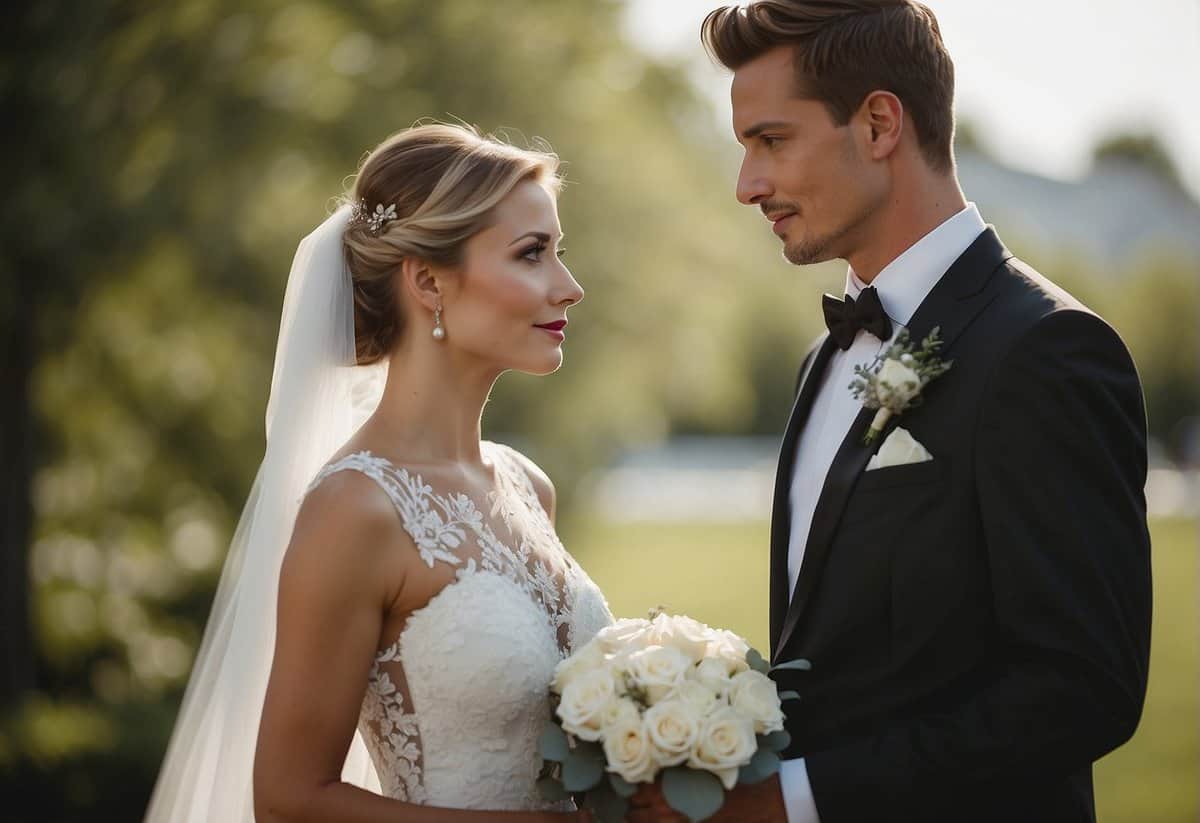
When you’re considering whether or not the groom should see the bride before the wedding, it’s essential to understand how this choice can shape the day’s emotional tone and memories.
Anticipation and Excitement
The tradition of the groom not seeing the bride before the ceremony plays a significant role in building anticipation. This seminal moment can be charged with excitement as you both look forward to the unique reveal at the altar. The joy and surprise you experience are often seen as hallmarks of a traditional wedding experience, making that walk down the aisle an emotionally special and unique event.
Personal Choice and Contemporary Alternatives
However, personal choice plays a crucial role in contemporary weddings. Some couples opt for a “first look,” where you can share a private moment before the ceremony. This alternative can create a relaxed atmosphere, calm any pre-wedding jitters, and provide an opportunity for some stunning, intimate photos. Whether or not the groom sees you in your wedding dress before the ceremony is a deeply personal decision that affects the nature of your special day. You can read more about these private exchanges here.
Logistics and Memorable Moments

When your wedding day arrives, managing the logistics with precision ensures that every special moment is seamless and well-documented. This coordination is vital for a meaningful ceremony and for capturing those memories through photography and videography.
Coordinating the Big Day
Your wedding ceremony’s success hinges on well-thought-out logistics. Creating a timeline is a must; it should detail each portion of your day, from the morning preparations to the final send-off. You’ll need to consider when and where you’ll be getting ready, the transportation to your venue, and the orchestration of the ceremony itself. Decide if you want to adhere to the tradition where the groom doesn’t see the bride until she walks down the aisle or if you prefer a first look moment.
- Morning Preparations: Time, Location, Attire
- Transportation: To and from the ceremony/reception
- Ceremony Schedule: Vows, Exchange of Rings, First Kiss
Capturing Memories with Photography and Videography
Photographs and videos allow you to relive your wedding date long after it’s over. When you plan a photo shoot, consider if you want to capture the groom’s first glimpse of the bride before the ceremony or during the traditional walk down the aisle. Your photographer and wedding videography team will coordinate to capture these moments discreetly and beautifully.
- First Look: A quiet, intimate setting away from the crowd.
- Ceremony Shots: Must-have photos – walking down the aisle, vows, the kiss.
- Reception Highlights: First dance, cake cutting, toasts.
Remember to communicate your preference for when the groom should see the bride on your big day to your photographer and videographer. This communication will help them prepare to capture these memorable moments according to your wishes.
Frequently Asked Questions
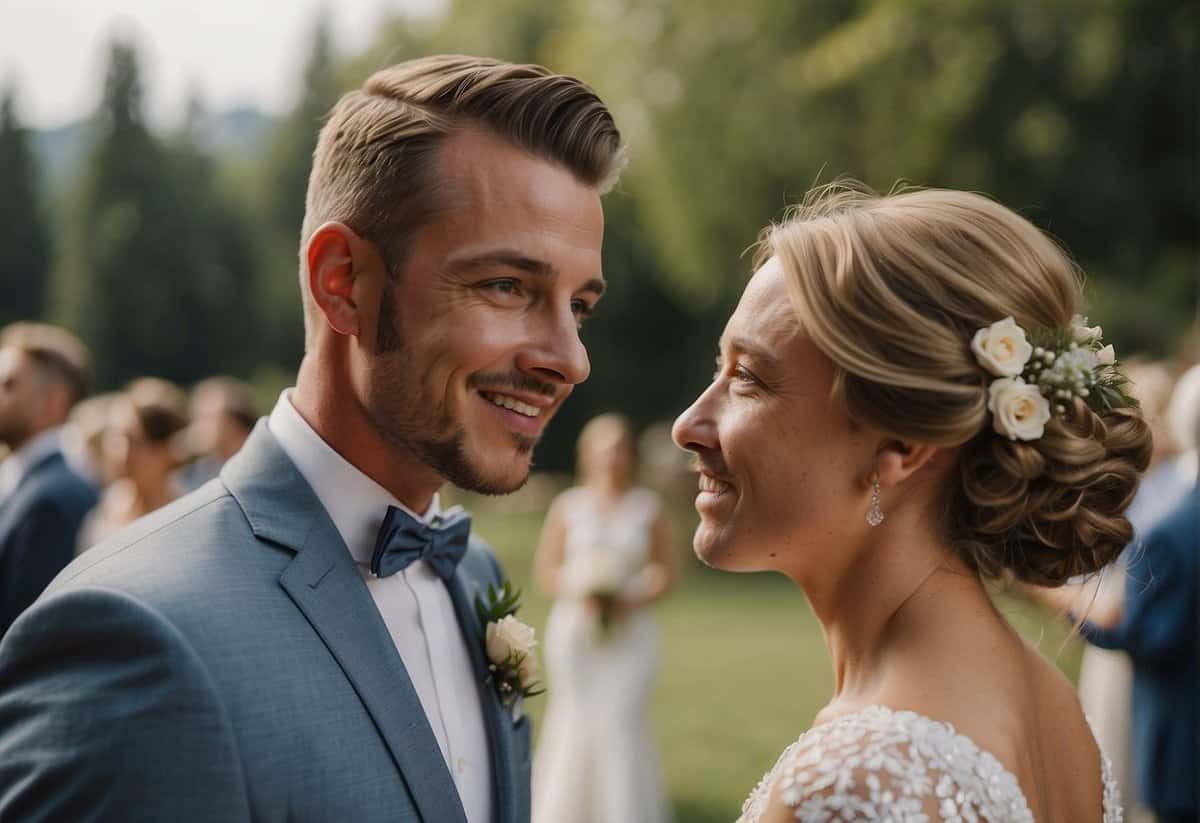
When it comes to your wedding day, understanding the traditions and superstitions can add a meaningful touch to the celebration. Here are some specific details about time-honored customs regarding the visibility between the bride and groom before the ceremony.
How long is it traditionally recommended for the bride and groom to avoid seeing each other before the ceremony?
Traditionally, the bride and groom are advised to avoid seeing each other the night before the wedding up until the ceremony itself. This span can range from 12 to 24 hours.
Is there a superstition about bad luck associated with the groom seeing the bride in her dress before the ceremony?
Yes, there is a long-standing superstition that it is bad luck for the groom to see the bride in her wedding dress before the ceremony. This belief stems from the time when arranged marriages were common and seeing each other beforehand was thought to risk the wedding not proceeding.
What is the tradition behind the groom not seeing the bride’s dress prior to the wedding?
The tradition of the groom not seeing the bride’s dress prior to the wedding comes from the fear that the groom might change his mind if he sees the bride before the actual event. This ritual is linked to the practices of arranged marriages and aimed at preventing any chance of the groom backing out.
Are there any taboos or negative superstitions if the bride sees the groom in his suit before the wedding?
There are typically no major taboos or superstitions involving the bride seeing the groom in his suit before the wedding. This contrasts with the custom concerning the groom’s view of the bride in her dress.
Which individuals are traditionally allowed to see the bride on the wedding day before the ceremony?
Typically, close family members and the bridal party, including bridesmaids and the mother of the bride, are allowed to see the bride on the wedding day before the ceremony. Photographers may also be present for pre-ceremony photographs.
What are some common traditions for the night before the wedding involving the bride and groom?
Common traditions for the night before the wedding often involve the bride and groom spending time separately with their respective friends and family members. These may include events like rehearsal dinners, bridal showers, or other forms of celebration and well-wishing.

